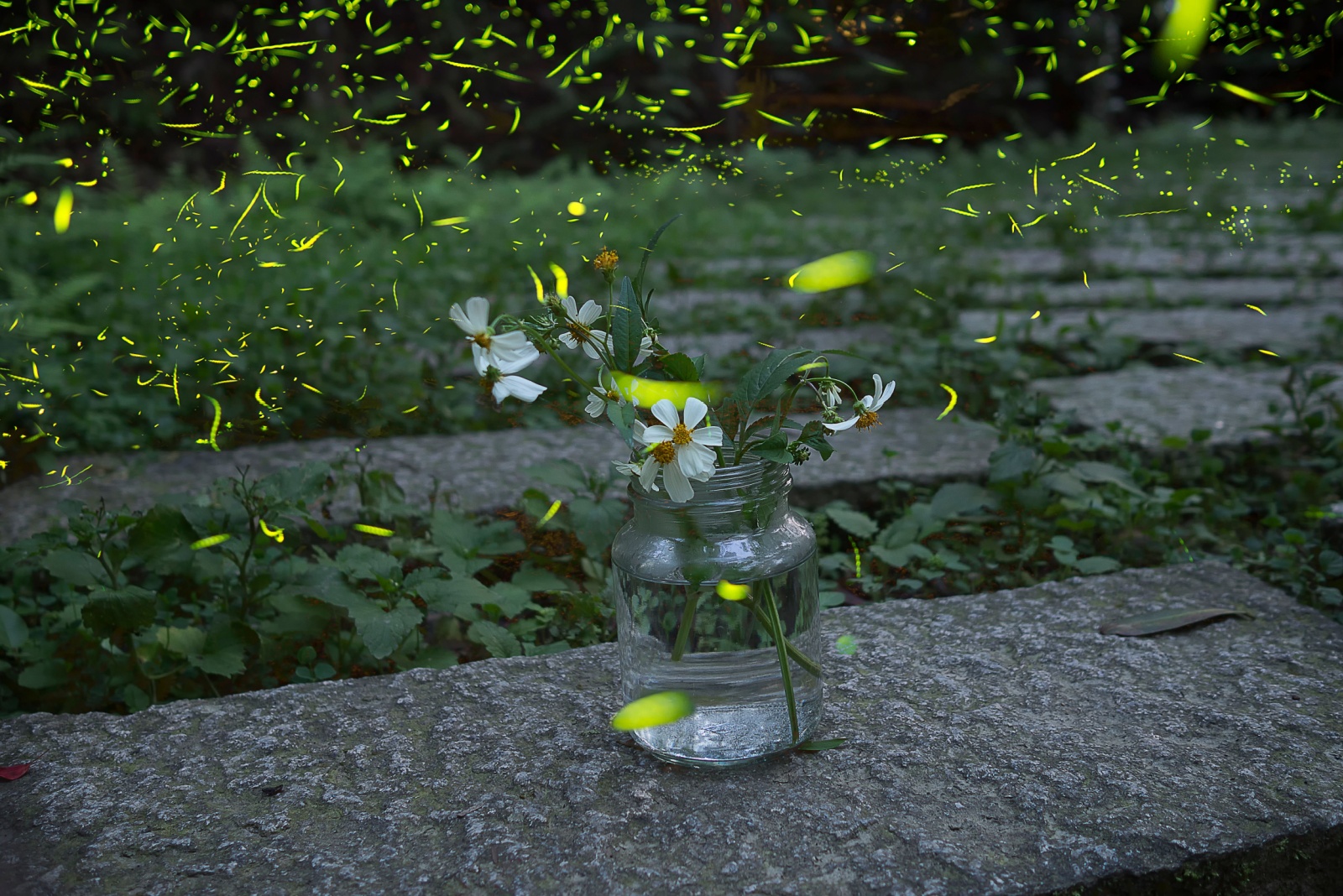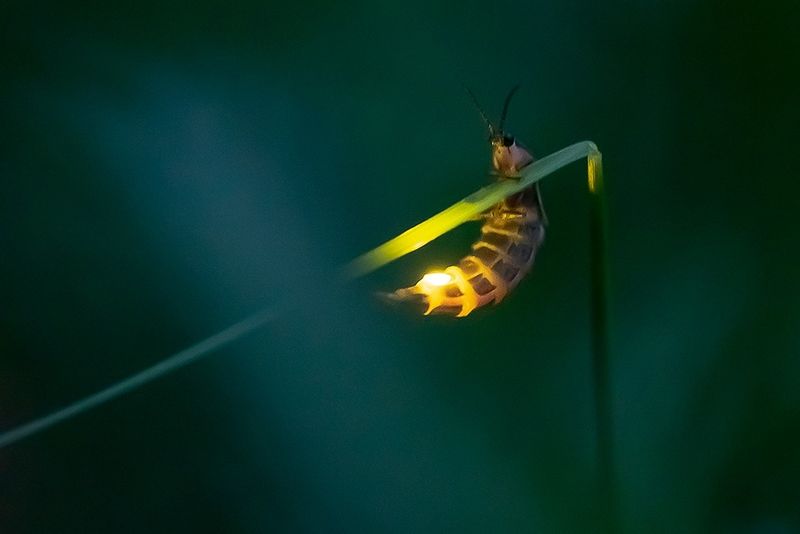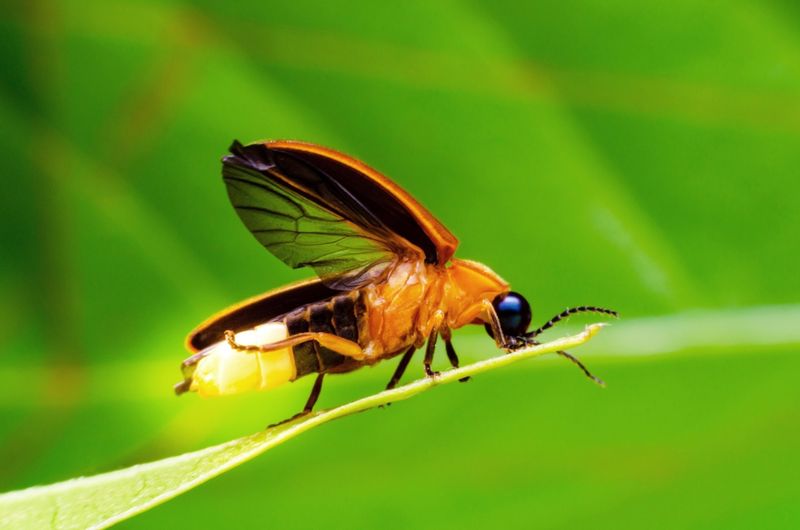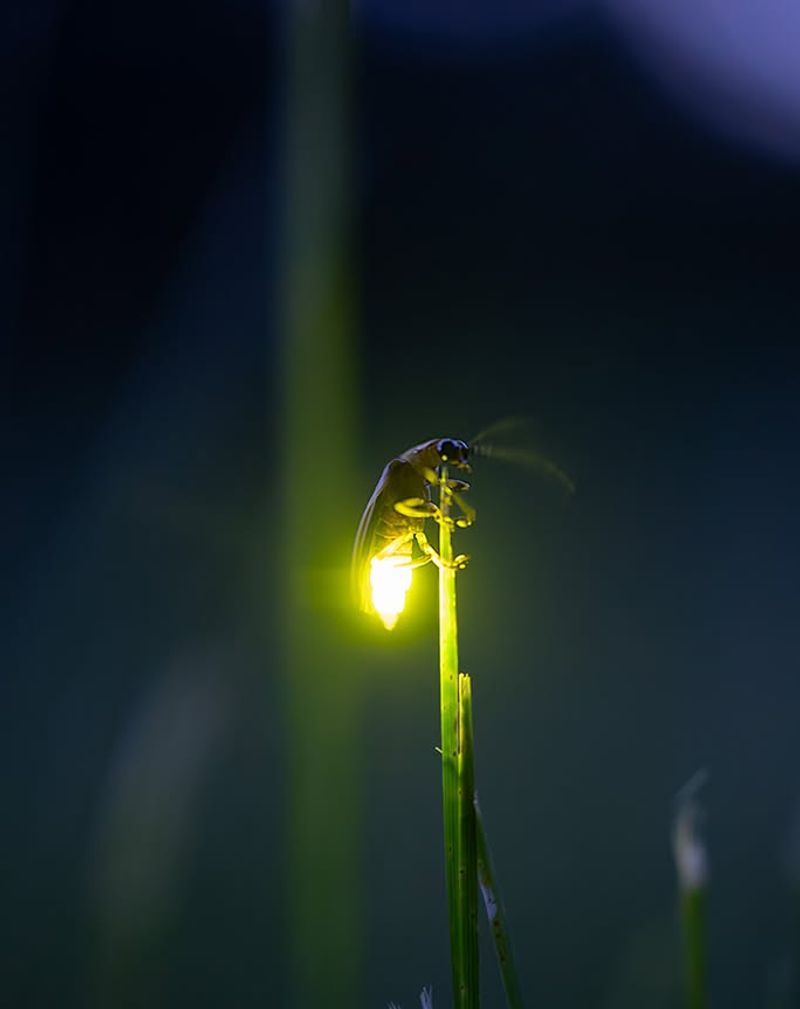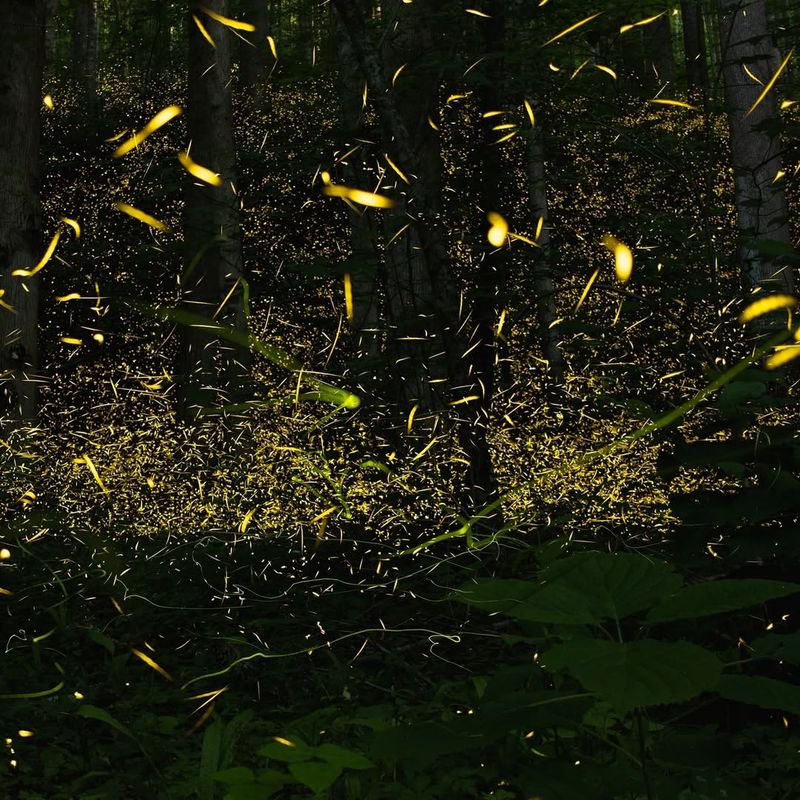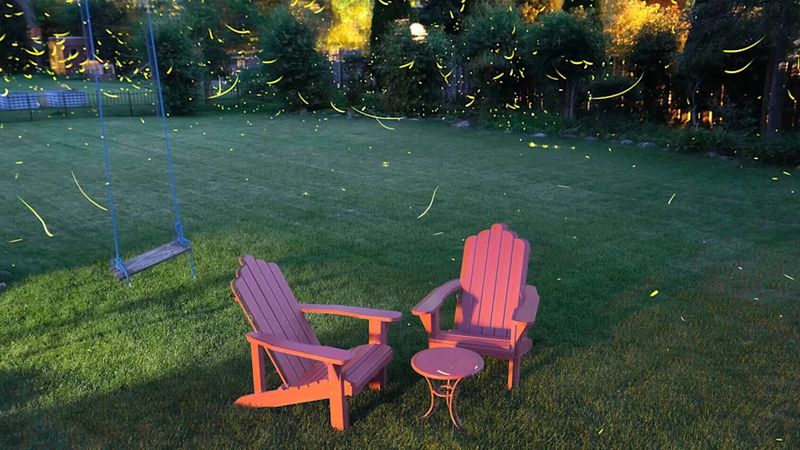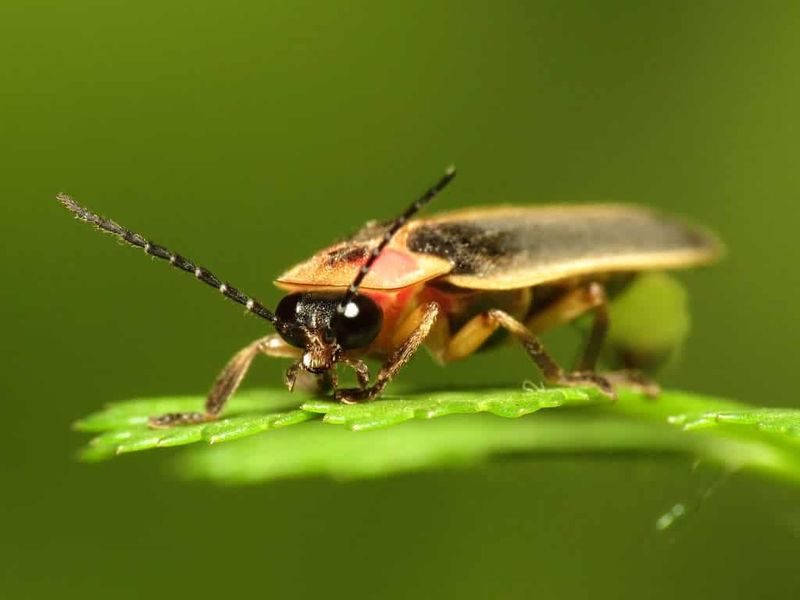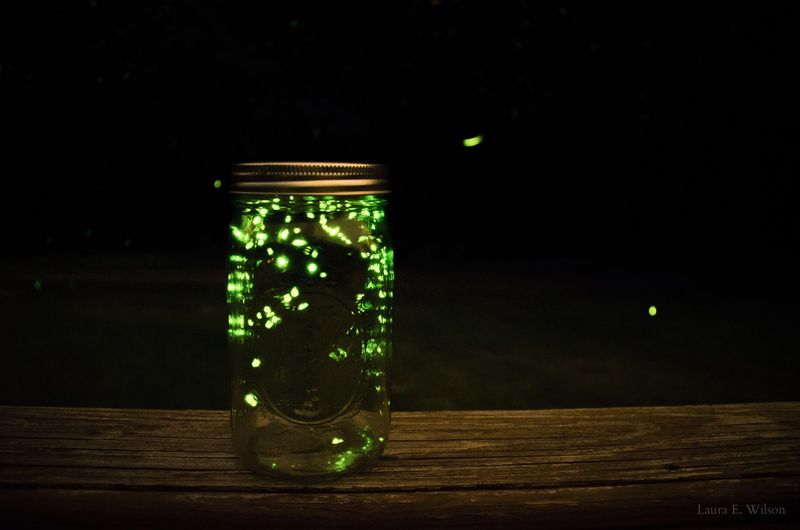Remember chasing fireflies on warm summer nights, watching their magical glow light up the darkness? Those childhood memories might become harder to make as firefly populations across Oklahoma continue to shrink year after year.
Scientists have noticed fewer of these glowing beetles appearing each season, and the reasons behind their disappearance affect more than just our nostalgia. Understanding why fireflies are vanishing helps us protect these incredible insects before they blink out forever.
1. Light Pollution Disrupts Their Glow Communication
Streetlights, porch lights, and glowing billboards create a constant brightness that confuses fireflies trying to find mates. Male fireflies flash specific patterns to attract females, but artificial light drowns out these signals like trying to whisper in a noisy cafeteria.
When fireflies cannot see each other’s bioluminescent messages, they struggle to reproduce and create the next generation. Cities and suburbs across Oklahoma have grown brighter over the decades, leaving fewer dark spaces where fireflies can successfully communicate.
Even a single bright light can affect fireflies within several hundred feet.
2. Pesticides Harm Firefly Larvae And Adults
Chemicals sprayed on lawns, gardens, and farms do not just kill mosquitoes and weeds—they poison fireflies too. Baby fireflies, called larvae, live in soil and leaf litter for up to two years before becoming the glowing adults we recognize.
When pesticides soak into the ground, these young fireflies absorb the toxins or eat contaminated prey like snails and slugs. Adult fireflies also get exposed when they rest on treated plants or drink dew containing chemical residue.
Oklahoma’s widespread agricultural practices mean pesticides reach many firefly habitats across the state.
3. Habitat Loss Removes Their Homes
Shopping centers, housing developments, and parking lots replace the meadows, forests, and wetlands where fireflies live. Each time someone builds on wild land, firefly populations lose the specific environments they need to survive.
Firefly larvae require moist soil rich with rotting leaves and plenty of small creatures to eat. Adults need tall grass and shrubs where they can rest during the day and flash their lights at night.
As Oklahoma continues developing rural areas, suitable firefly territory keeps shrinking. Without proper habitat, entire local firefly populations simply cannot exist.
4. Climate Change Alters Their Life Cycles
Rising temperatures and shifting rainfall patterns throw off the delicate timing fireflies depend on for survival. Firefly larvae need consistently moist soil to grow, but Oklahoma has experienced more frequent droughts in recent years.
When the ground dries out too much or stays wet at the wrong times, larvae cannot develop properly or may die before reaching adulthood. Warmer winters also confuse fireflies about when to emerge, sometimes causing them to appear before their food sources are available.
Climate shifts happen faster than fireflies can adapt their ancient life cycles.
5. Lawn Care Practices Destroy Breeding Grounds
Perfect lawns might look nice, but they create terrible firefly habitat. Frequent mowing, raking away leaves, and removing dead plant material eliminates the layer of debris where firefly larvae live and hunt for food.
Many homeowners also use fertilizers and weed killers that make soil toxic to developing fireflies. Native wildflowers and grasses that support the entire ecosystem get replaced with sterile turf grass that offers fireflies nothing.
Oklahoma neighborhoods filled with manicured yards become firefly deserts. Letting some areas grow wild helps these beetles thrive again.
6. Water Pollution Damages Wetland Habitats
Runoff from streets, farms, and factories carries oil, chemicals, and excess nutrients into streams, ponds, and marshes where many firefly species breed. Some firefly larvae live in wet areas near water, feeding on aquatic snails and worms.
When pollution contaminates these environments, it kills the prey fireflies depend on or poisons the larvae directly. Fertilizer runoff causes algae blooms that deplete oxygen, making wetlands uninhabitable for the creatures fireflies eat.
Oklahoma’s numerous small waterways face pollution threats that ripple through entire ecosystems, including firefly populations living nearby.
7. Collection And Disturbance Stress Populations
Catching fireflies in jars seems harmless, but when too many people collect them from the same area, local populations suffer. Fireflies captured for observation often die in containers before being released, and even brief captivity stresses them during their short adult lives.
Some fireflies live only a few weeks as adults, giving them limited time to mate and lay eggs. Removing even a small percentage from an already declining population can prevent successful breeding.
While enjoying fireflies is wonderful, disturbing them too much in already threatened habitats adds unnecessary pressure to struggling populations across Oklahoma.

